In co-operation with the Estonian Tourist Board
Kynö in Estonia is a small and very special island. Its traditional culture is so distinctive and well-preserved that it has been designated as one of humanity's intangible cultural heritages. Here, weddings are celebrated like nowhere else in the world, and women are in charge.
Table of contents
Kynö in Estonia
Kynö, or Kihnu in Estonian, is an island in the Pärnumaa region off the south-west coast of Estonia. The island is located near the holiday town of Pärnuand also near the island of Runö. Today there are about 400 year-round residents, and despite a small population, they are careful to keep the special traditions alive.
To Kynö by ferry
After visiting Pärnu, we drove to the Munalaiu ferry camp, which took just over half an hour by car. The ferry journey, for which we paid 23 euros, then took an hour. The weather was quite bad when we left, but it has become much better since then.


The harbour on Kynö
When we arrived at Kynö, we were greeted by a cosy little ferry landing with a few small shops where you could buy crafts, waffles, gooseberries or perhaps a map of the island for one euro. You can also rent bikes here. Cycling around the island is very popular.

On Kynö, women decide
The first thing we were told about Kynö before travelling here is that this is the island where women are in charge. We've even heard of this island as Europe's last matriarchy. On the island, women are in charge, and the most popular image is that of a woman in folk costume riding around on a motorbike with a sidecar. But what does it mean that the women are in charge? We met a female guide who could tell us more.

Life on Kynö in Estonia
Our guide, Mare, told us about life on the island. Throughout history, men have worked as fishermen, sealers, stone collectors and sailors, staying away from home for long periods of time. Meanwhile, women have taken over the helm and managed life at home - from education to church traditions.
Culture on Kynö is living, which includes the use of folk costumes, the singing of traditional songs, the speaking and writing of the local dialect (which has some loan words from Swedish, such as "sweater"), and the teaching of children to play the violin or accordion at school. Weddings are still celebrated in the traditional way, with relatives of the bride and groom taking turns singing songs to the bride-to-be.

How do you live today?
We are curious and asked about everything. How is it possible to maintain the old culture, and how do you live today? According to Mare, many people who come from Kynö want to stay, and there are a number of jobs in the municipality, the school, health care, the museum, and in tourism and shipping.
Estonia is at the forefront of the digital world, so it may also be possible to work online from the island. Despite this, jobs can be hard to come by, which is why some of the residents have moved away anyway. For those who remain, holding on to culture seems important, and there are plenty of music, art and cultural events organised on the island.
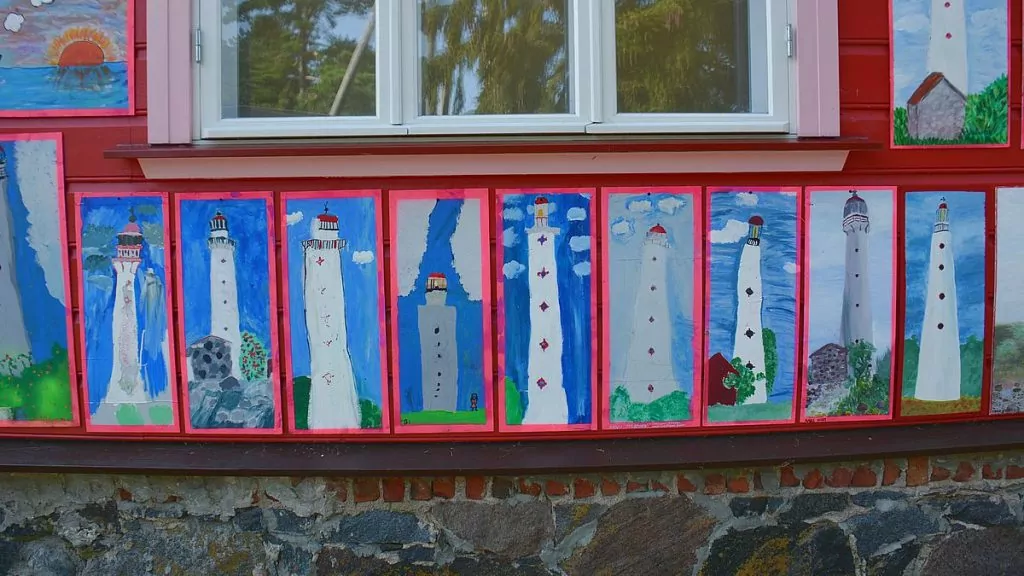
Are tourists coming?
We asked which tourists most often visit the island, and in first place are Estonians from the mainland. In second place, somewhat surprisingly... Japanese! The Japanese have a great cultural interest and are fascinated by this ancient culture that should be preserved according to UNESCO.
Germans come too, of course (to check out the motorbikes), but almost no Swedes. They would like to see more Swedes! But they don't want to see more of the tourists who (unfortunately) come to shoot birds just for fun. This is allowed by law, so the only thing the villagers could do as a protest is an art project ...
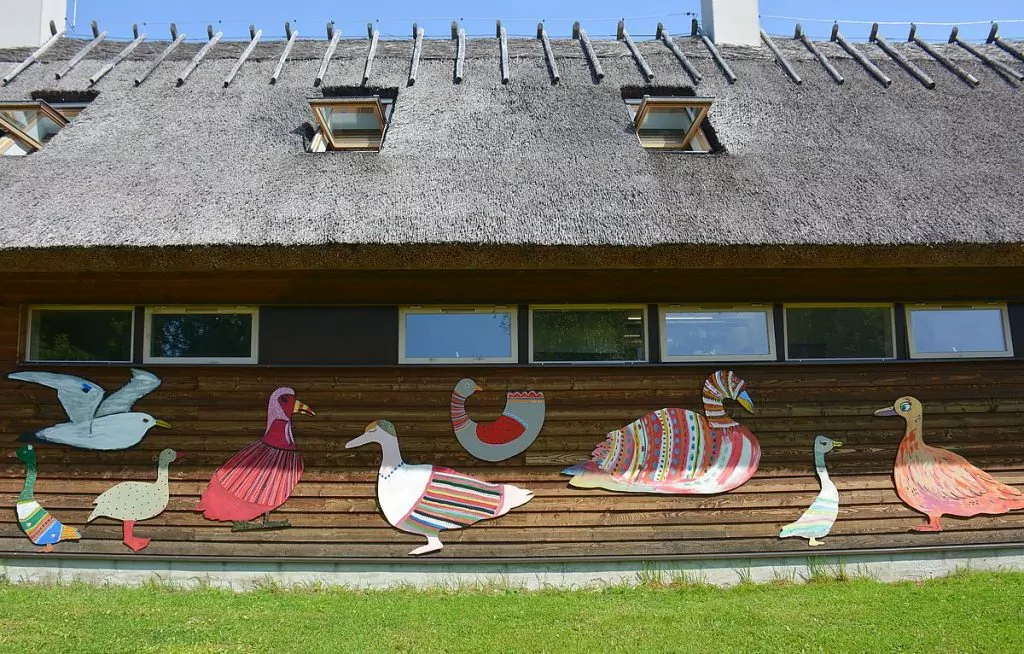
Kynö Museum
A good way to familiarise yourself with the culture is to visit the Kynö Museum, located in the middle of the island next to the school and church. When we arrived, the museum was decorated with lots of pictures from a previous festival on the island. When you arrive, it might look different.


At the museum you can learn about the clothes, the schooling and the culture of both women and men. The men have fished and hunted seals, but also engaged in naive art during their long periods at sea.
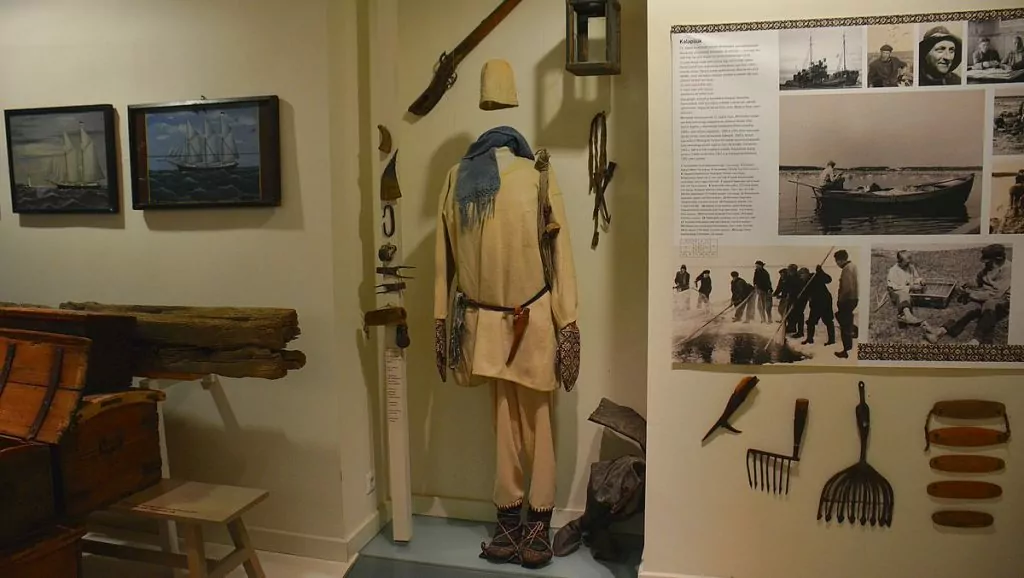
Kynö Church
The church on Kynö, which is directly opposite the museum, looks Lutheran but is Orthodox. The explanation is that the church was once built as a Lutheran church, and was later converted into an Orthodox church. During a period in history, the islanders were struggling with food shortages and were promised tax breaks and other benefits if they converted to the Orthodox faith.

The church, like all other social functions on Kynö, is run by women. It is the women who organise baptisms, weddings and funerals.

Guided tour
After visiting the museum and the church, our guide took us on a tour around the island in his pick-up truck. I (Helena) went in the front, and Peter did the ride in the back ...

Kynö lighthouse
At the very south end of Kynö is a lighthouse, Kihnu tuletorn. The area around the lighthouse is fantastic, and if you pay a small fee you can also go up to the lighthouse. I (Helena), who is afraid of heights, did not have to, and the photo from the top is Peter's ...




Next to the lighthouse is a small shop, where you can buy handicrafts, locally produced beer and locally produced ice cream. The woman who worked as a lighthouse keeper took the opportunity to knit, and these are not just any products, we realised.
Our guide told us that even the president has a jumper knitted by this woman, and that you have to wait at least two years if you want to order one yourself, as the queue is so long.

Lunch, coffee and local food
If you want to have lunch or coffee, there are several places to stop around the island. Unfortunately, the islanders still seem a little unaccustomed to tourists other than Estonians and Japanese (who come in groups with a guide).
Several of the places mentioned by the guide are only signposted in Estonian. The place in the picture below, which sells handicrafts and coffee, is in Lemsi and it may be useful to know that the café is called "Kohvik" in Estonian. But we've already told you, so maybe next summer there will be signs in English.
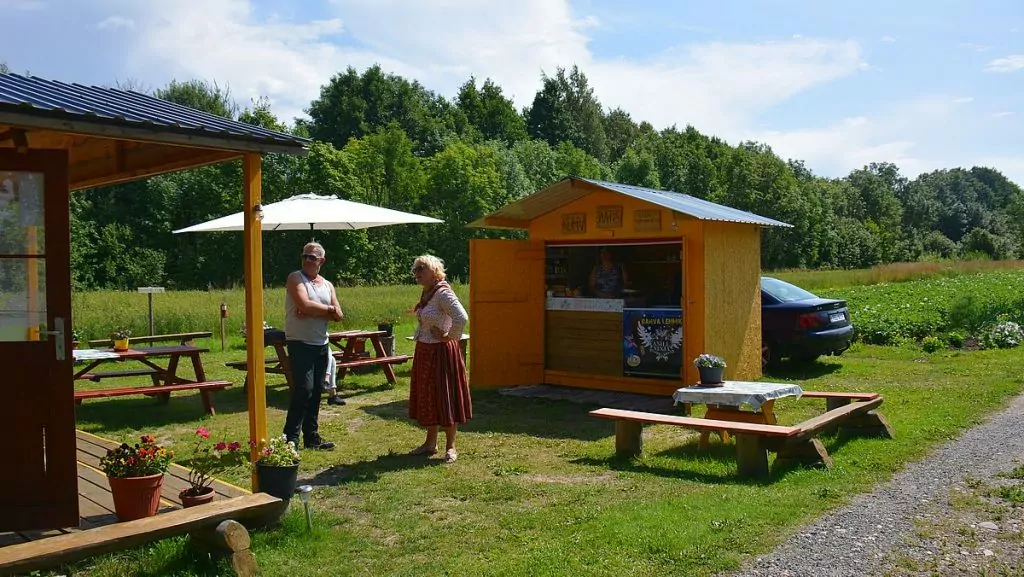
We had lunch at a nice place with outdoor seating in Rock City. It took quite a long time to get the food in (the beautiful weather probably surprised the staff) but the goose and potatoes tasted really good.

We also took the opportunity to buy some interesting food from Kynö in Estonia. They eat a lot of (smoked) fish and bake a special bread. The most special product is ... seal! We bought everything in a small farm shop called Rooslaiu Talu.

There was a lunch of bread and fish the next day, along with locally produced beer that we bought at the lighthouse. The beer was really good and also the smoked fish. We didn't really like the sweet and slightly sticky bread, but maybe it's a matter of taste. What about the seal? We have to admit that we haven't tried it yet. The perfect "seal-eating day" has simply not materialised, yet. We'll be back!

Long-haired cows
We also saw a bunch of long-haired cows during our tour of the island. Soooo charming! One wonders what some look like under their bangs...?



Free camping on Kynö in Estonia
There is a campsite on Kynö and we first considered staying there overnight. There are really cosy cabins and the possibility to stay with a motorhome, but we thought it was a bit too shady and continued down to the beach.

We found a fantastic spot by the beach. There was another couple camping a short distance away, but otherwise it was completely empty. We have never before freecamped as much as we do here in Estonia. Free camping is allowed, it's safe and there's lots of beautiful nature. And believe it or not, a short walk from our free campsite there was a free outdoor toilet, with toilet paper.
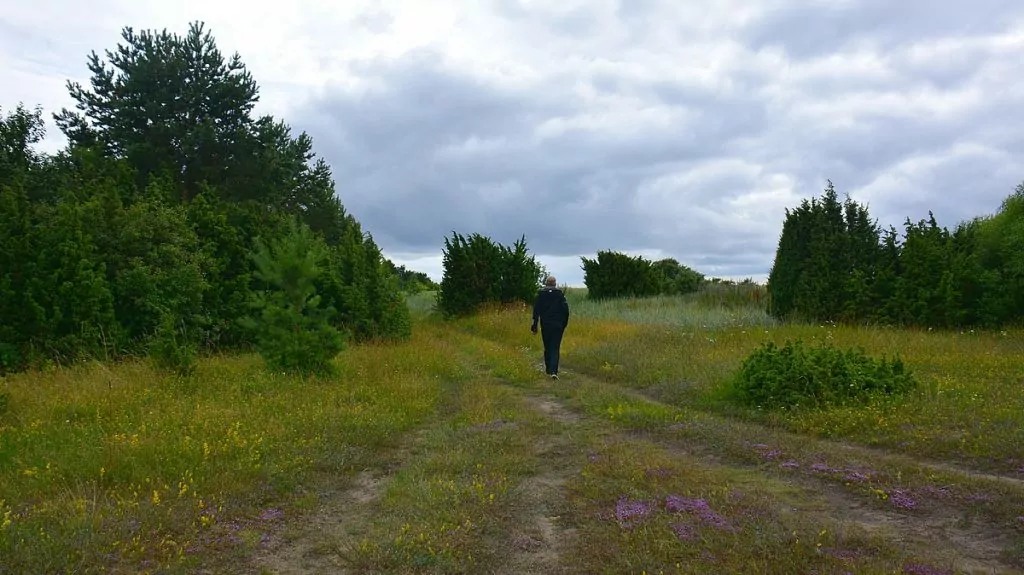



Video from Kihnu
Beer and wine in Tallinn - beer bars, German beer hall and Ukrainian food
Guest writer: Jonathan Gharbi de Maré Tallinn is a popular weekend destination and there is a lot of culinary and...
The highest mountain in the Baltics - Suur Munamägi in Estonia
In cooperation with the Estonian Tourist Board We have "climbed" the highest mountain in the Baltics - Suur Munamägi in Estonia....
The cliffs of Ontika in Estonia - and Oru Park in Toila
In collaboration with the Estonian Tourist Board The cliffs of Ontika in Estonia are dramatically steep rock faces that plunge into the...
Motorhome holiday in Estonia - starting in Tallinn
We're finally off on a motorhome trip in Estonia, exploring the country for three weeks! We...
Exploring the port of Tallinn, Estonia
One of the best things about travelling is discovery. Going on unplanned...
Rally Estonia in Tartu - a great festival of people
In cooperation with the Estonian Tourist Board Rally Estonia in Tartu is a great folk festival that attracts...
Things to do in Estonia - 30 sights and experiences
What to see and do in Estonia? We offer 30 tips for a country...
Guided tour of Tallinn - the Kalamaja neighbourhood
Today you can join a guided tour in Tallinn, Estonia! We love guided tours. When...
What to do in Tallinn - 30 sights and experiences
What to see and do in Tallinn? We have visited Estonia several times and...
Facts about Estonia - 30 things you (might) not know
Here are the facts about Estonia - 30 things you (maybe) didn't know about the country. Estonia is...
Haapsalu, Estonia - noise village charm on the coast
In collaboration with the Estonian Tourist Board Haapsalu in Estonia is a beautiful wooden town on the Estonian coast....
Dagö in Estonia - among lighthouses and Swedish history
In cooperation with the Estonian Tourist Board Dagö in Estonia is a green and scenic island, where...
Lahemaa National Park in Estonia - nature and mansions
In cooperation with the Estonian Tourist Board Lahemaa National Park in Estonia is a large natural area that offers...
Proto discovery workshop - experience centre in Tallinn
The Proto Discovery Workshop is an experience centre in Tallinn where you can discover and experience early technological developments,...
10 things to do in Tartu, Estonia
What to do in Tartu, Estonia? We spent three days in this...
Pärnu in Estonia - beaches, spas and villas
In cooperation with the Estonian Tourist Board Pärnu in Estonia is known for its beaches, spas and...
Ferry to Tallinn - what not to miss
If you follow our blog, you know that we travelled by ferry to Tallinn during the Easter holidays. We...
Travelling by motorhome in Estonia - all you need to know
What is it like travelling with a motorhome in Estonia? We have just returned home after barely...
Saaremaa in Estonia - the island of windmills
Saaremaa in Estonia is an island in the Baltic Sea the size of Gotland, known to all...
Narva in Estonia - on the border with Russia
In cooperation with the Estonian Tourist Board Narva in Estonia is the EU's outpost against Russia, with the border crossing...
2 good hotels in Tallinn, Estonia - luxury or colour?
We have now tried two different good hotels in Tallinn, Estonia. The first night we stayed ...
Cruise Stockholm - Tallinn with Victoria I
We have been on a cruise Stockholm - Tallinn with Victoria I from Tallink Silja Line. So...
Sauna and spa in Tallinn - a weekend of spa fun and "sauna rituals"
Why not spend a weekend at a spa in Tallinn? There are many different spas, and what's more...
Rakvere fortress in Estonia - history and spectacle
In cooperation with the Estonian Tourist Board Rakvere Fortress is located on a hill in the town of Rakvere in the north of...
Lake Peipus in Estonia - village festivals, onions and old-timers
Lake Peipus in Estonia is located in the eastern part of the country and is known for its...
7 great restaurants in Tallinn - and some cafés and bars
There are many nice restaurants in Tallinn, and also a whole bunch of lovely cafés and bars....
Rummu quarry in Estonia - prison turned bathing paradise
In cooperation with the Estonian Tourist Board Rummu quarry in Estonia is a very different sun and bathing paradise,...
Ferry to Estonia - Tallink silja vs DFDS
Ferry to Estonia, which one to choose? On our last trip to Estonia, we tried two different ferry...
Keila waterfall in Estonia - and a romantic park
In cooperation with the Estonian Tourist Board Keila Waterfall in Estonia is the country's third largest waterfall and is located...
Christmas market in Tallinn - a brilliant experience
Christmas market in Tallinn! We visited the beautiful capital of Estonia for a weekend, and when we arrived...

Facts about Kynö in Estonia
- Country: Estonia
- Landscape: Pärnumaa
- Municipality: Municipality of Kynö
- Length: 7 kilometres (north-south)
- Width: 4 kilometres (west-east)
- Population: About 700 registered on the island and about 400 year-round residents.
Language and culture on Kynö
- Language: Kynö dialect (a variant of Estonian) and Estonian. Many also know English.
- Unesco heritage: The traditional culture of Kynö was designated in 2003 by UNESCO as one of the Intangible Masterpieces of Humanity through the programme Proclamation of the Masterpieces of the Oral and Intangible Heritage of Humanity. Cultural expressions include singing (kalevalametric rune singing), dancing, games, wedding traditions, handicrafts and specialised clothing. In 2008, Kynö's traditional culture was also included in the UNESCO list of world heritage sites. Representational List of the Intangible Cultural Heritage of the Humanity and is thus an official intangible cultural heritage.
Things to see and do on Kynö
- Villages: Linnaküla (centre), Lemsi, Rootsiküla ("Swedish village") and Sääre.
- Attractions: Kynö Church (Kihnu kirik), Museum (Muuseum) and Kynö Lighthouse (Kihnu tuletorn)
- Activities: Cycle around the island (bikes are available for hire), go fishing, make home visits, experience the island on a guided tour, try local food, buy local crafts or take part in events.
Journey to Kynö in Estonia
- Ferry: The ferry to Kynö runs mainly from Munalaiu Port, but sometimes also from Pärnu Port (Kalda 2). In summer, the ferry runs about 3-4 times a day. Contact the tourist office in Pärnu or see the website. Veeteed for up-to-date information on ferries.
- Winter road: In winter, a winter road can sometimes also run across the ice, but this is often only for a few weeks per winter.
Accommodation on Kynö in Estonia
- Guest houses and bed & breakfasts: There are many different types of accommodation, including small guest houses, bed & breakfasts and farmhouse accommodation. You can find different types of accommodation at Visit Kihnu.
- Camping: There is a campsite on the western part of the island, Linaküla Rannakämping. The campsite is mainly focused on cottage accommodation, but it is also possible to stay with a motorhome/caravan and pay for electricity. You can also free camp almost anywhere on the island, as long as it is not on a private property.
Programme "Promoting Estonia as a Tourism Destination" is supported by European Union Regional Development Fund.





















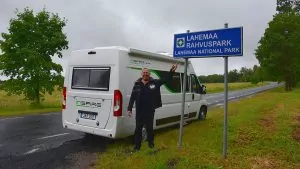
















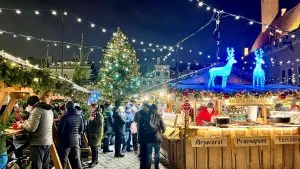
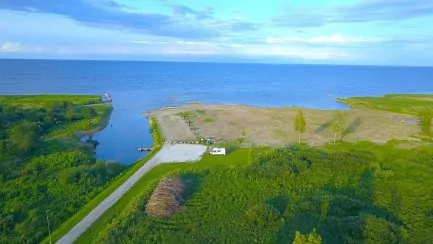








Ruth in Virginia says:
What a fascinating place! The Baltic countries have been
a blank page for me. Your journey has shown me, how many beautiful
places there are in little Estonia, even though it is a poor country.
"Rock City"! Wonder where that name comes from?
The campsite looks very nice but the beach is quite sticky. 🙂
20 July 2019 - 6:30
Helena says:
Really! Both beautiful and very special and interesting! Haha, we also wondered about "Rock city"! Apparently there was a boat called that once! Looked like nice sandy bottom in the water actually (but did not swim here).
20 July 2019 - 8:53
Britt-Marie Lundgren says:
What a little gem you have discovered!
After this post, it would be strange if the proportion of Swedish tourists did not increase.
This is exactly the kind of place we want to mix the "must-see" attractions with, and the possibility of hiking in scenic places is not bad either!
20 July 2019 - 9:03
Helena says:
Truly a gem! A very special and interesting island to visit!
20 July 2019 - 16:48
Ama de casa says:
What a cool place! Love the cheerful house ðŸ™'
The cow looked to be Scottish highland cattle, they are so beautiful! Was often and visited them on Järvafältet when we lived in Sollentuna.
You're good at refusing heights 😉.
20 July 2019 - 9:05
Lisa says:
Kynö seems well worth a visit, may be another time. We chose Ösel where there would also be ladies on motorbikes. We didn't see any, and didn't notice that time had stood still there. Nice anyway.
Kovik , must laugh took us a very long time to understand that not every other town was called that but that it means café . Estonian is not so easy to understand.
20 July 2019 - 9:51
Helena says:
Ama de casa, maybe that's what it is? The cows were super nice in any case! 🙂 And yes, there are sooo many heights to refuse ... 😉.
20 July 2019 - 16:49
Margaretha Lillvik says:
I have also been curious about Estonia for a long time and who knows, maybe I will make a trip there. Now we have received some tips from you. Nice to hear that you can fricamp, we like that. What about the roads and toll roads? We have visited Poland before so now it is probably time for Estonia too. Very interesting country to visit I think.
20 July 2019 - 10:50
Helena says:
Margaretha, Estonia is really worth discovering and a nice country to travel in! The roads are excellent! No toll roads.
20 July 2019 - 16:50
Mr Jonas says:
Why does a Swedish article say Munalaiu Port and Pärnu Port in English? Port in Estonian is called sadam, so you can write Munalaiu sadam and Pärnu sadam.
27 July 2019 - 19:58
Helena says:
Hi Jonas! Thank you for your comment, yes we have noticed that harbour is called sadam in Estonian. Could also have written harbour in Swedish actually. The reason why it's easy to end up in English is that I always have to use English when I write, because I read brochures and websites etc. in English. So it's easy to do that. Basically, I agree with you, and try to translate into Swedish, or keep the original language. But as I said, it takes extra time and since I write every day, it's hard to get it exactly right all the time 😉.
27 July 2019 - 20:23
Mr Nils-Åke Hansson says:
Women are in charge everywhere! Did you meet anyone who spoke Swedish?
20 July 2019 - 16:22
Helena says:
There is no longer a Swedish-speaking population here, but there are various historical memories of the Swedish population that existed in the past. There were only a few on Kynö, but there were many more on the surrounding islands. Did not meet any Swedish tourists on Kynö (they are apparently few) but heard Swedish tourists on the larger islands.
20 July 2019 - 16:54
Elisabeth says:
What an exciting place! There aren't many matrisrkat, so it's nice to meet something.
20 July 2019 - 20:12
Helena says:
Very interesting place! 🙂
27 July 2019 - 20:24
BP says:
What an exciting and unique place - to visit, not to live in. You are really discovering a number of places totally unknown to me and probably to most readers.
Liked the museum with the naive paintings - those always make me happy.
Now I'm just waiting for the review of the seal. Really exciting. Love to test "unusual" and unfamiliar dishes.
20 July 2019 - 20:43
Helena says:
This place was completely unknown to us also before. Loved such places. very interesting!
27 July 2019 - 20:24
Lena - good for the soul says:
What a cute and funny little island. Truly special! It's great when you preserve proud traditions. And those cows! So cute!
Hug Lena
22 July 2019 - 8:09
Helena says:
Aren't the cows beautiful? Love them 🙂
27 July 2019 - 20:25
staffan skott says:
Thank you!
The cross on the church is the Orthodox cross.
25 July 2019 - 8:00
Helena says:
Yes, that's exactly right! We did not get it together at first when we saw the Orthodox cross on a church that looked more like a Lutheran church, but then we got the explanation! 🙂
27 July 2019 - 20:25